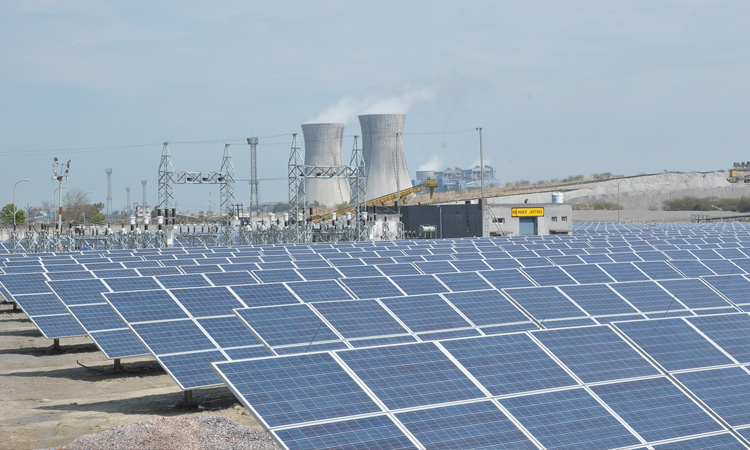A report by the Institute for Energy Economics and Financial Analysis (IEEFA) thinktank, and consultant JMK Research, has highlighted the role mixes of different electricity generation sources and storage can play in overcoming the intermittency challenge of variable renewables, such as solar and wind, to ensure grid stability.
Clean power blended with either conventional, fossil fuel-fired thermal plants with low load factors, or renewables plus energy storage systems can provide the firm, round-the-clock power needed by electricity distribution companies, according to the report.
“There is increasing emphasis on [the] firming of VRE [variable renewable energy]-integrated power,” said Jyoti Gulia, lead author of the report and the founder of Haryana-based JMK Research. “This will be even more the case now that India has pledged, at COP26, to install 500 GW of non-fossil fuel capacity, and to meet 50% of energy requirements from renewables by 2030,” she added, referring to the pledge made by the government at the recent climate change summit held in Glasgow. “In India, we have seen renewable energy tenders evolve from plain vanilla solar or wind, to hybrid, to assured peak power, to round-the-clock.”
Utilities are now driving a new set of tenders to manage their 24-hour power supply requirements with renewable energy sources that meet 80-85% annual capacity utilization factor (CUF) conditions during peak and off-peak hours, added Gulia.
Recommendations
The report, co-written by Vibhuti Garg, energy economist and India lead at Cleveland-based IEEFA; and JMK research associate Akhil Thayillam, examined the key conditions of the two round-the-clock tenders held by state body the Solar Energy Corporation of India (SECI).
The study points out the term “round-the-clock” may be misleading as successful projects in the two procurement exercises are required to provide a CUF of at least 80% and 85%. The CUF is the volume of electricity actually generated by the power plants in a year, expressed as a percentage of the maximum possible output, under ideal conditions.
Having modeled the generation and storage technologies available, the authors of the study concluded a renewables-plus-fossil fuel mix could be most effective to meet the needs of the SECI tenders.
“Growth in new thermal power capacity is neither viable nor sustainable,” said Garg. “The thermal power sector in India is already grappling with numerous stranded coal-based assets and an increasing amount of coal capacity that is being left idle. Bundling renewable energy with electricity generated in coal-based plants that have low PLFs [plant load factors, an indication of how often power plants generate at full output] to provide firm RTC [round-the-clock] power is one way to make use of some of this idle capacity.”
Garg said the government recently issued guidelines which enable fossil fuel-based energy to be replaced by renewables under existing power purchase agreements (PPAs).
“As part of this change, thermal power generation companies are allowed to set up renewable energy generation capacity, either by themselves or through other renewable developers, by open bids, and [can] supply the electricity generated to consumers under their PPAs.”
In the longer term, as the cost of batteries continues to decline, the authors of the study said battery energy storage systems are likely to become the most viable option for providing critical, non-intermittent power.
The report stated India needs time-based incentives to better match renewable energy supply to demand. Looking at the different approaches to demand-based power supply which have been applied in countries such as the U.S., Germany, and Chile can help India find a path forward.
To further enhance grid balancing, India could also explore options beyond the physical aggregation of generation resources and storage technologies, such as virtual power plants – cloud-based networks of grid-integrated generation and storage assets.
“To make round-the-clock a reality in India,” said Gulia, “the renewable energy industry needs to work alongside policymakers, investors and other stakeholders to provide cost-effective power procurement models that target grid [imbalances], along with [aiming for the] improvement of capacity utilization and reliability of power infrastructure.”
This content is protected by copyright and may not be reused. If you want to cooperate with us and would like to reuse some of our content, please contact: editors@pv-magazine.com.









1 comment
By submitting this form you agree to pv magazine using your data for the purposes of publishing your comment.
Your personal data will only be disclosed or otherwise transmitted to third parties for the purposes of spam filtering or if this is necessary for technical maintenance of the website. Any other transfer to third parties will not take place unless this is justified on the basis of applicable data protection regulations or if pv magazine is legally obliged to do so.
You may revoke this consent at any time with effect for the future, in which case your personal data will be deleted immediately. Otherwise, your data will be deleted if pv magazine has processed your request or the purpose of data storage is fulfilled.
Further information on data privacy can be found in our Data Protection Policy.